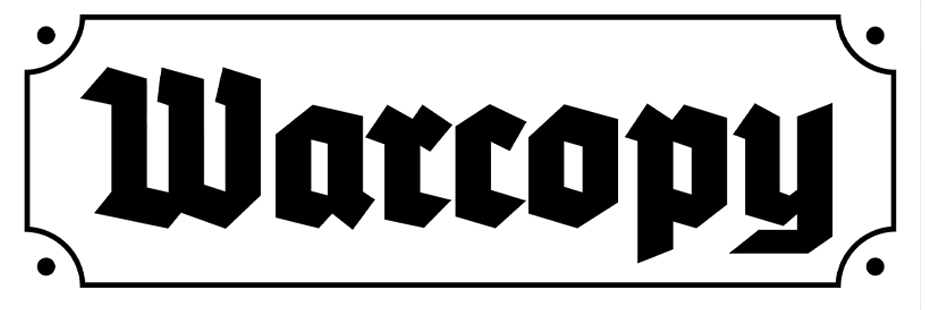Field post during World War II
From a military point of view, the field post office, such as the medical service, belongs to the supply units. The transport of mail in the field was an absolute priority, as delayed field mail, especially from family members "could cause the soldier to worry and make it difficult for him to fulfill his duties."
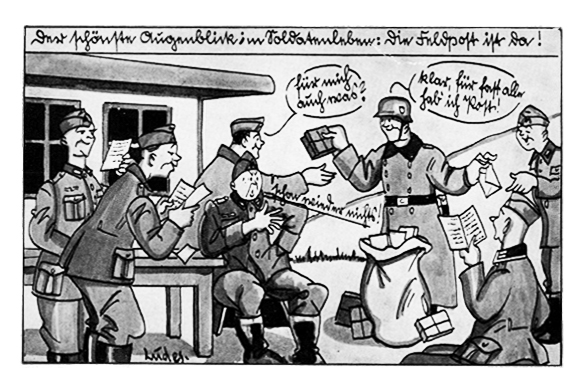 All consignments from the field had to be marked "Feldpost" and had to contain information about the sender. Soldiers could not take letters into the field, because if they fell into the hands of the enemy, they could provide militarily relevant information (supply situation or troop movements). Also for this reason, it was forbidden to keep a diary.
All consignments from the field had to be marked "Feldpost" and had to contain information about the sender. Soldiers could not take letters into the field, because if they fell into the hands of the enemy, they could provide militarily relevant information (supply situation or troop movements). Also for this reason, it was forbidden to keep a diary.
The field post office was usually located together with other supply units (ammunition, clothing and food) at transport hubs. Wehrmacht units took care of the delivery and removal of field mail. Each unit had a mail collector who was familiar with field mail regulations and had to identify himself when sending and receiving. At night, guards were deployed, transports secured guards from looting. Especially in times of supply constraints, military postal items used to be looted, mostly containing food or consumer goods.
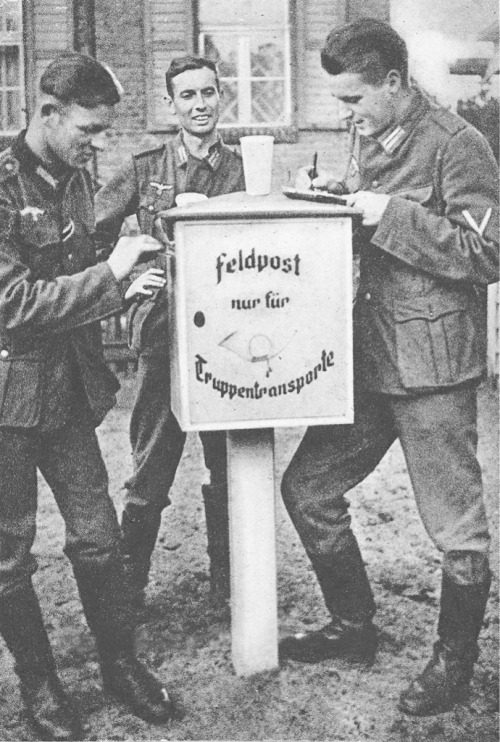 Field postcards and letters up to 100g were delivered free of charge. Soldiers received field postcards for free, a maximum of two per man per week.
Field postcards and letters up to 100g were delivered free of charge. Soldiers received field postcards for free, a maximum of two per man per week.
Packages up to 200 g were sent free of charge, over 200g up to 1kg it was necessary to stick a stamp with a value of 20 Rpf on the package. For postal and field payment orders, field postal orders and field payment cards from the field and telegrams, the usual domestic fee.
To send parcels by field mail from the house to the field, each member of the German Wehrmacht received 2 stamps monthly for transporting parcels by field mail. The soldier sent these stamps by field letter to his relatives' home, from which he expected a package. For packages weighing more than 250g, in addition to the transport stamp, it was necessary to affix a postage stamp with a value of 20pf (1kg = 1x stamp + 1x 20 Rpf postage stamp, 2kg = 2x stamp + 2x 20 Rpf postage stamp).
Private letters and postcards up to a maximum weight of 10g were allowed for transport by air field post. From June 1943, air mail was restricted by air postage stamps. The soldier was given 4 pieces per month. Shipments were transported by air only if they were provided with this postage stamp.
The maximum package size was 60 cm (length, width and height together).
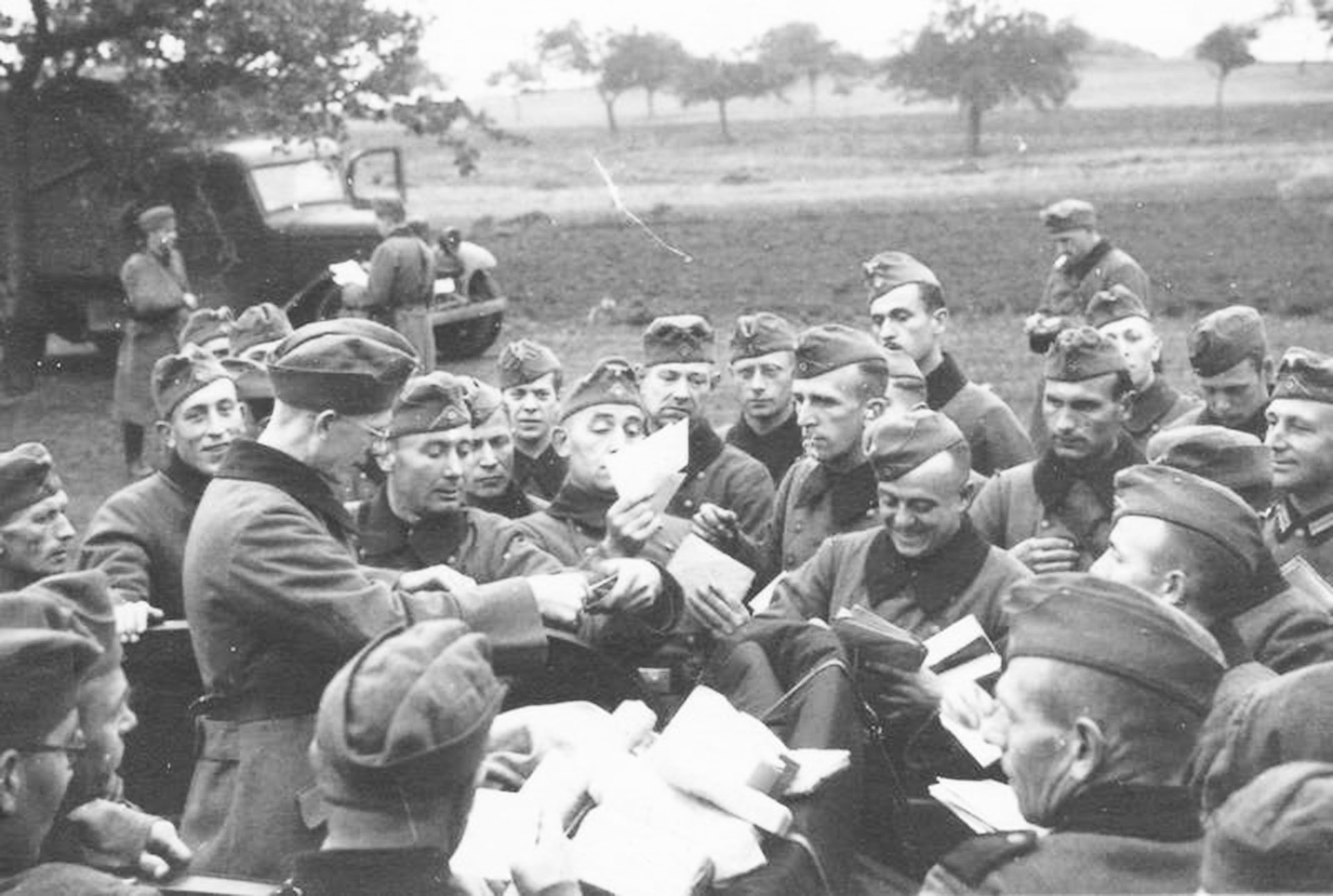 At the beginning of 1942, the efficiency of postal workers decreased due to the high workload and increased morbidity. Foreign workers and prisoners of war were also increasingly used, thanks to which the post office was able to cope with the growing volume of mail.
At the beginning of 1942, the efficiency of postal workers decreased due to the high workload and increased morbidity. Foreign workers and prisoners of war were also increasingly used, thanks to which the post office was able to cope with the growing volume of mail.
In August 1944, significant restrictions were announced by the Deutsche Reichspost. The sending of small parcels was interrupted, express and Sunday deliveries were canceled, deliveries of letters on working days were restricted, domestic telegrams and telegraphic postal orders were blocked.
In 1945, due to railway congestion, almost no mail was transported. The Wehrmacht High Command refused to issue more vehicles to the field post office, and many shipments were late. In the last months of the war, it was increasingly difficult or even impossible to connect between field postmen.
The field post as a whole functioned until the end of the war. In total, it transported an estimated 30 to 40 billion items during the war.
CENSORSHIP
A Wehrmacht soldier could usually go on vacation twice (for two weeks a year). In other cases, they had to rely on written communication. Everyone was allowed to write as much as they wanted, the field letters were free, and the quantity was subject to restrictions only in exceptional cases caused by the war.
The censorship bodies began their work on March 12, 1940. The basis for checking the contents of the field post office was the "Communication Decree". Due to the huge volume of leaves, the inspection could only be performed at random. As a result, less than 1% of the total number of reports were sent for investigation.
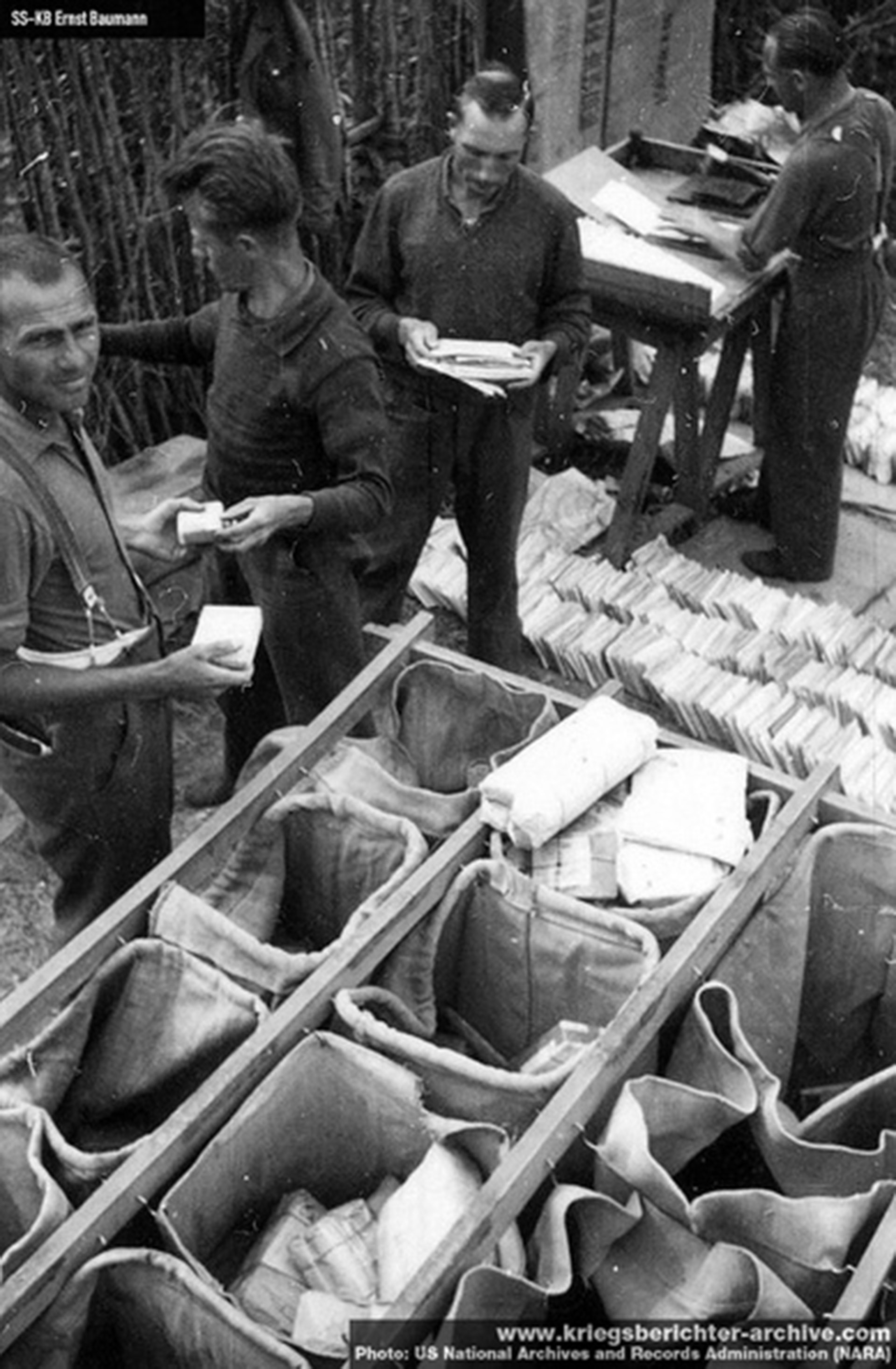 Common abbreviations were allowed in the letters. Writing by Morse code, mirror, or other secret script was prohibited. There was no general talk about the composition, equipment, combat force, deployment and accommodation of one's own unit or other units, the names of colleagues or superiors.
Common abbreviations were allowed in the letters. Writing by Morse code, mirror, or other secret script was prohibited. There was no general talk about the composition, equipment, combat force, deployment and accommodation of one's own unit or other units, the names of colleagues or superiors.
In addition, nothing was allowed to write about the intentions of the fight, the movement of troops, details of the position or anything negative about the mood and diet of soldiers. It was also forbidden to mail gossip of all kinds, photographs and images (which were subject to confidentiality), hostile propaganda ...
Guidelines for exemplary letter writing were repeatedly distributed in newspapers, magazines, and other media.
For example, no problems or gossip should be reported from the house, while front-line soldiers should positively influence their relatives and encourage them to persevere.
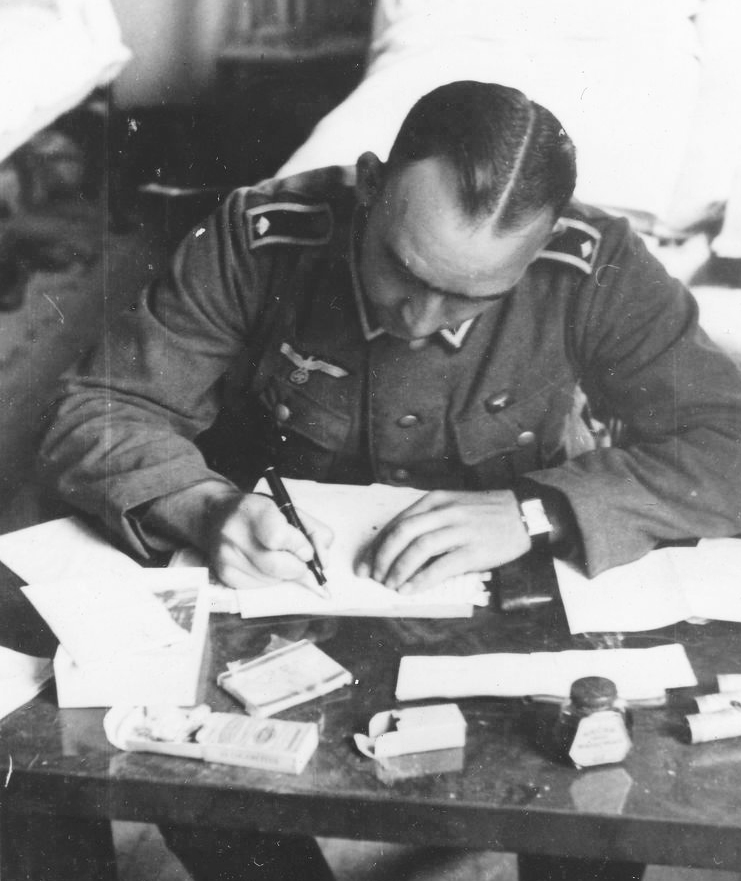 The staff of one group of field post censors usually consisted of a manager, four officers and 14 non-commissioned officers.
The staff of one group of field post censors usually consisted of a manager, four officers and 14 non-commissioned officers.
The officers checked only the officers' mail, that is, the mail of higher ranks. Non-commissioned officers checked the letters from the units.
The rank of letter writer was taken from the sender's note.
The mail of army generals, military authorities and the Reich Minister was not censored and therefore was not controlled.
Telegrams from authorities, corporations, public law institutions and public institutions (hospitals) and from NSDAP offices were also excluded from inspections.
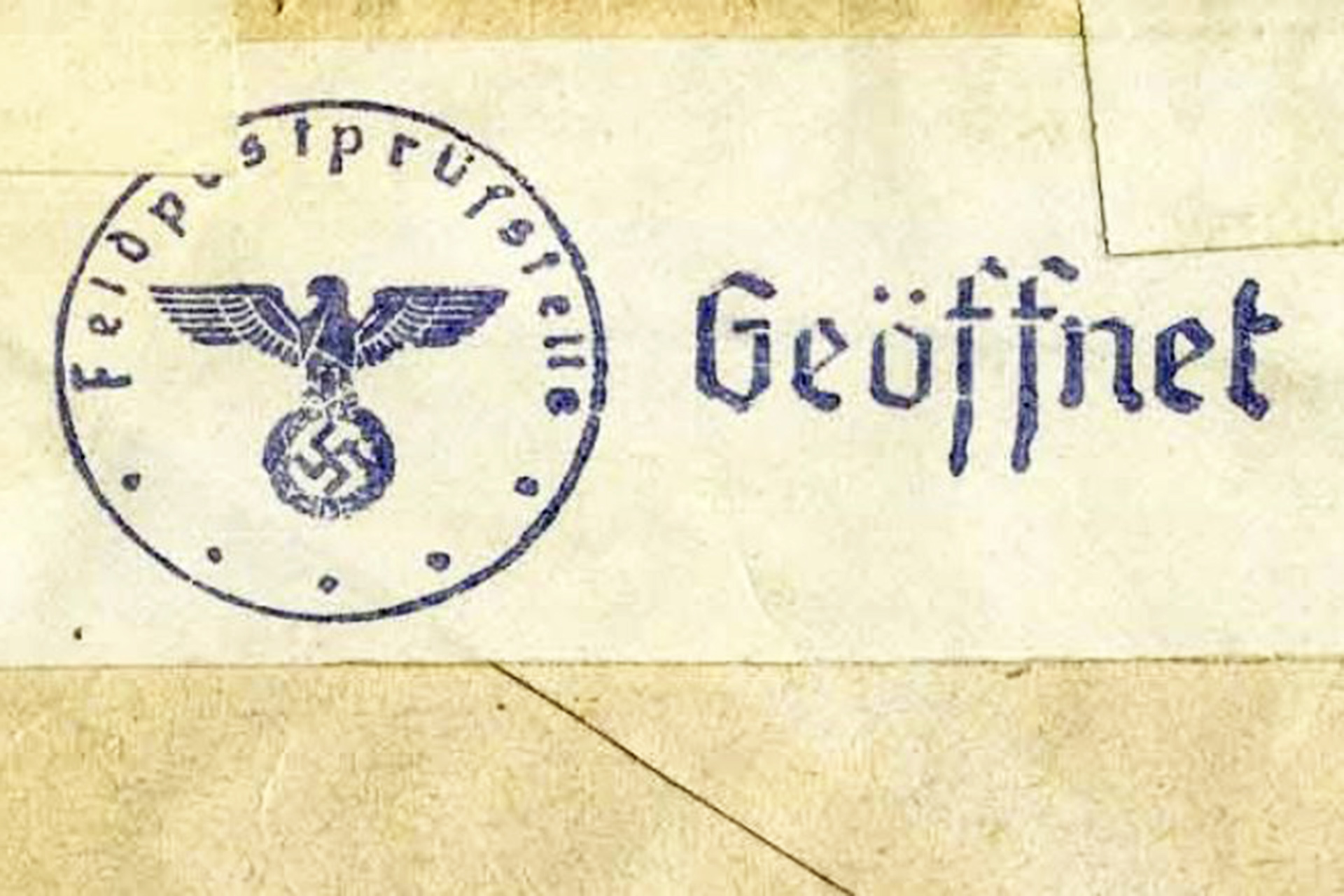 Letters were opened with a knife or scissors. The fact that the letter opened could be seen retrospectively, but this was not a problem because the censorship was not secret. The open but not suspicious letters were then sealed with a tape marked "Geöffnet" and sent to the addressees. Postcard marked "Geprüft". In the case of less serious infringements, the infringement areas were blacked out or cut out with scissors.
Letters were opened with a knife or scissors. The fact that the letter opened could be seen retrospectively, but this was not a problem because the censorship was not secret. The open but not suspicious letters were then sealed with a tape marked "Geöffnet" and sent to the addressees. Postcard marked "Geprüft". In the case of less serious infringements, the infringement areas were blacked out or cut out with scissors.
Soldiers knew about censorship and tried to use pre-arranged signals (underlining words or other wording). As censorship checked less than 1% of field mail, it was common for soldiers to describe their views, apparently without any censorship requirements.
Letters from home were subject to less censorship. Although they were also randomly inspected, in principle, there was nothing to hide militarily. The bomber attacks were evident and were reported by radio if possible.
Defeat statements or outspoken criticism of authorities and executives threatened the author with imprisonment or even the death penalty. It is estimated that between 30,000 and 40,000 soldiers fell victim to military jurisdiction during the war.
Censorship worked until the end of the war.
